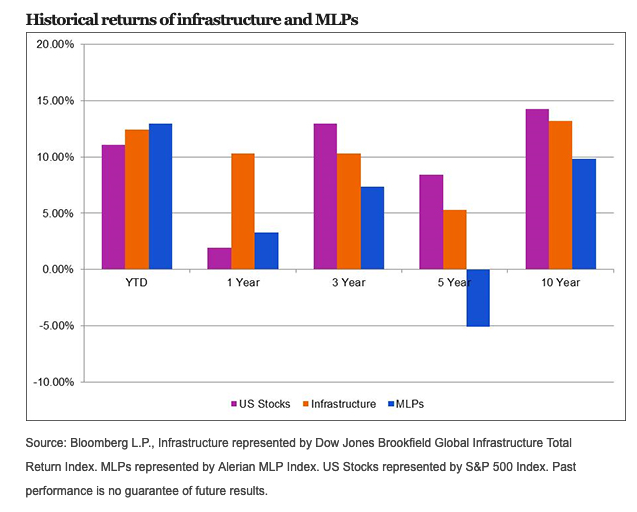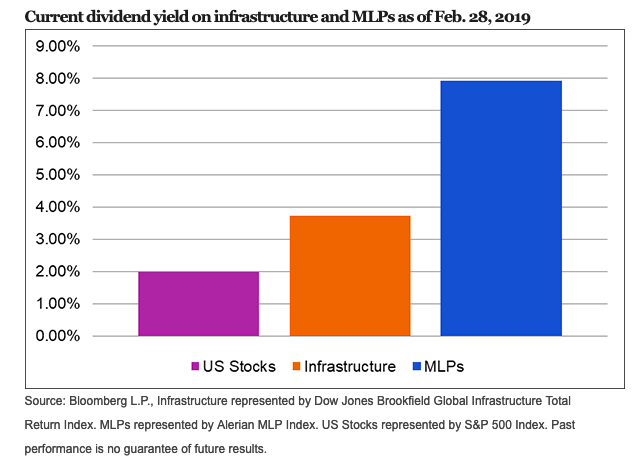Morgan Stanley issued lower price targets on many big energy names on Monday, hurting exchange-traded funds (ETFs) like the Energy Select Sector SPDR (NYSEArca: XLE), which fell about 1 percent. Investors looking towards energy sector exposure may have to get more tactical as strength could be waning, which could pave the way for opportunities in master limited partnerships (MLPs).
Other ETFs like the SPDR S&P Oil & Gas Exploration & Production ETF (NYSEArca: XOP have been the beneficiaries of rising oil prices, but this could be abnormal.
“In last five days, XOP has gapped at a 6 percent spread from oil, and traditionally that’s 1 percent,” said WallachBeth’s Andrew McOrmond. “I think that’s been dragging down these ETFs.”
“You hold the 5 percent weighting, which is the S&P weighting, and you go on autopilot and rejoice in the fact that lower oil prices are good for the U.S. economy,” he added.
If investors are looking for alternate plays as opposed to the broad-based exposure in energy or commodity-specific plays like oil, they can look to MLPs.
An Alternative Energy Play in MLPs
ETFs structured as a partnership are unincorporated business entities so they are not subject to the double taxation of a corporation. If the partnership does not elect to be taxed as a corporation, then it also benefits from pass-through taxation so any realized gains and losses flow directly to investors in the fund.
Partnerships are flexible in terms of the types of investments they can make. Unlike grantor trusts, partnerships can invest in other types of commodities like oil or natural gas due to their flexibility.
However, ETFs structured as a partnership fall under the regulatory measures of the U.S. Commodity Futures Trading Commission. As such, these ETFs are subject to reporting and other financial disclosures.
One specific type of partnership in the ETF world is the master limited partnership (MLP).
MLPs are typically classified into three categories:
- Upstream MLPs: involved in the exploration, recovery, development and production of crude oil and natural gas.
- Midstream MLPs: involved in the gathering, processing, storage and transportation of oil and gas.
- Downstream MLPs: involved in the distribution of fuels to end customers such as residential, industrial and agricultural entities.
MLP ETFs, in particular, are gaining traction as their own niche market in the energy sector.

Some ETFs to take advantage of in this space include the Cushing Utility & MLP ETF (XLUY), Cushing Energy & MLP ETF (XLEY), Cushing Energy Supply Chain & MLP ETF (XLSY), and Cushing Transportation & MLP ETF (XLTY).
To improve tax efficiency, MLP-related ETFs limit exposure to MLPs to 24% at each quarterly rebalance. Traditional MLP funds that hold more than 25% of their portfolios in MLPs are structured as C-Corporations and must pay corporate income tax on distributions before passing them on to investors, which incurs additional tax headaches come tax season that translates to lower overall returns.

For more market trends, visit ETF Trends.


